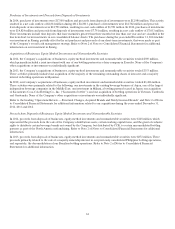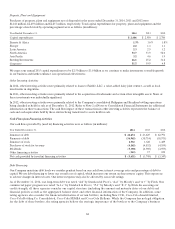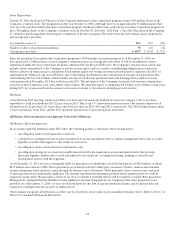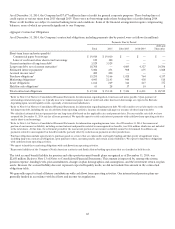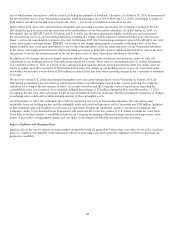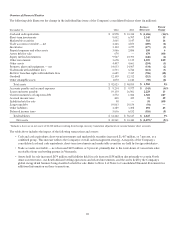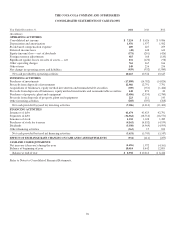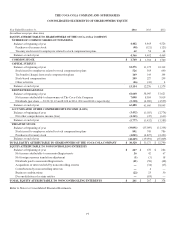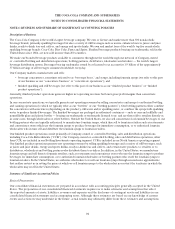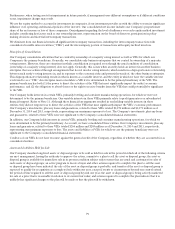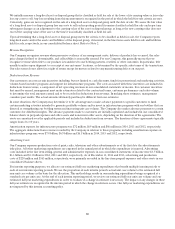Coca Cola 2014 Annual Report Download - page 73
Download and view the complete annual report
Please find page 73 of the 2014 Coca Cola annual report below. You can navigate through the pages in the report by either clicking on the pages listed below, or by using the keyword search tool below to find specific information within the annual report.71
Interest Rates
The Company is subject to interest rate volatility with regard to existing and future issuances of debt. We monitor our mix of fixed-rate
and variable-rate debt as well as our mix of short-term debt versus long-term debt. From time to time, we enter into interest rate swap
agreements to manage our exposure to interest rate fluctuations.
Based on the Company’s variable-rate debt and derivative instruments outstanding as of December 31, 2014, a 1 percentage point
increase in interest rates would have increased interest expense by $148 million in 2014. However, this increase in interest expense
would have been partially offset by the increase in interest income related to higher interest rates.
The Company is exposed to interest rate risk related to its investments in highly liquid securities. These investments are primarily
managed by external managers within the guidelines of the Company’s investment policy. Our policy requires investments to be
investment grade, with the primary objective of minimizing the potential risk of principal loss. In addition, our policy limits the amount
of credit exposure to any one issuer. We estimate that a 1 percentage point increase in interest rates would result in a $57 million
decrease in the fair market value of the portfolio.
Commodity Prices
The Company is subject to market risk with respect to commodity price fluctuations, principally related to our purchases of sweeteners,
metals, juices, PET and fuels. We manage our exposure to commodity risks primarily through the use of supplier pricing agreements
that enable us to establish the purchase prices for certain inputs that are used in our manufacturing and distribution business. We also
use derivative financial instruments to manage our exposure to commodity risks at times. Certain of these derivatives do not qualify for
hedge accounting, but they are effective economic hedges that help the Company mitigate the price risk associated with the purchases
of materials used in our manufacturing processes and the fuel used to operate our extensive vehicle fleet.
Open commodity derivatives that qualify for hedge accounting had notional values of $9 million and $26 million as of December 31,
2014 and 2013, respectively. The fair value of the contracts that qualify for hedge accounting resulted in a liability of $1 million. The
potential change in fair value of these commodity derivative instruments, assuming a 10 percent decrease in underlying commodity
prices, would have resulted in a net loss of $2 million.
Open commodity derivatives that do not qualify for hedge accounting had notional values of $816 million and $1,441 million as of
December 31, 2014 and 2013, respectively. The fair value of the contracts that do not qualify for hedge accounting resulted in a liability
of $163 million. The potential change in fair value of these commodity derivative instruments, assuming a 10 percent decrease in
underlying commodity prices, would have increased unrealized losses to a loss of $205 million.


